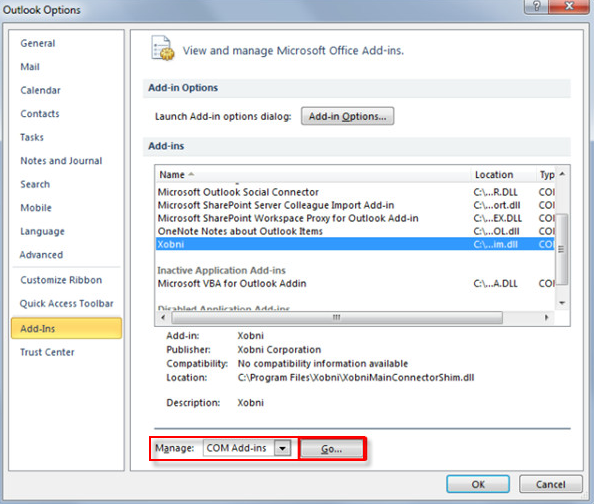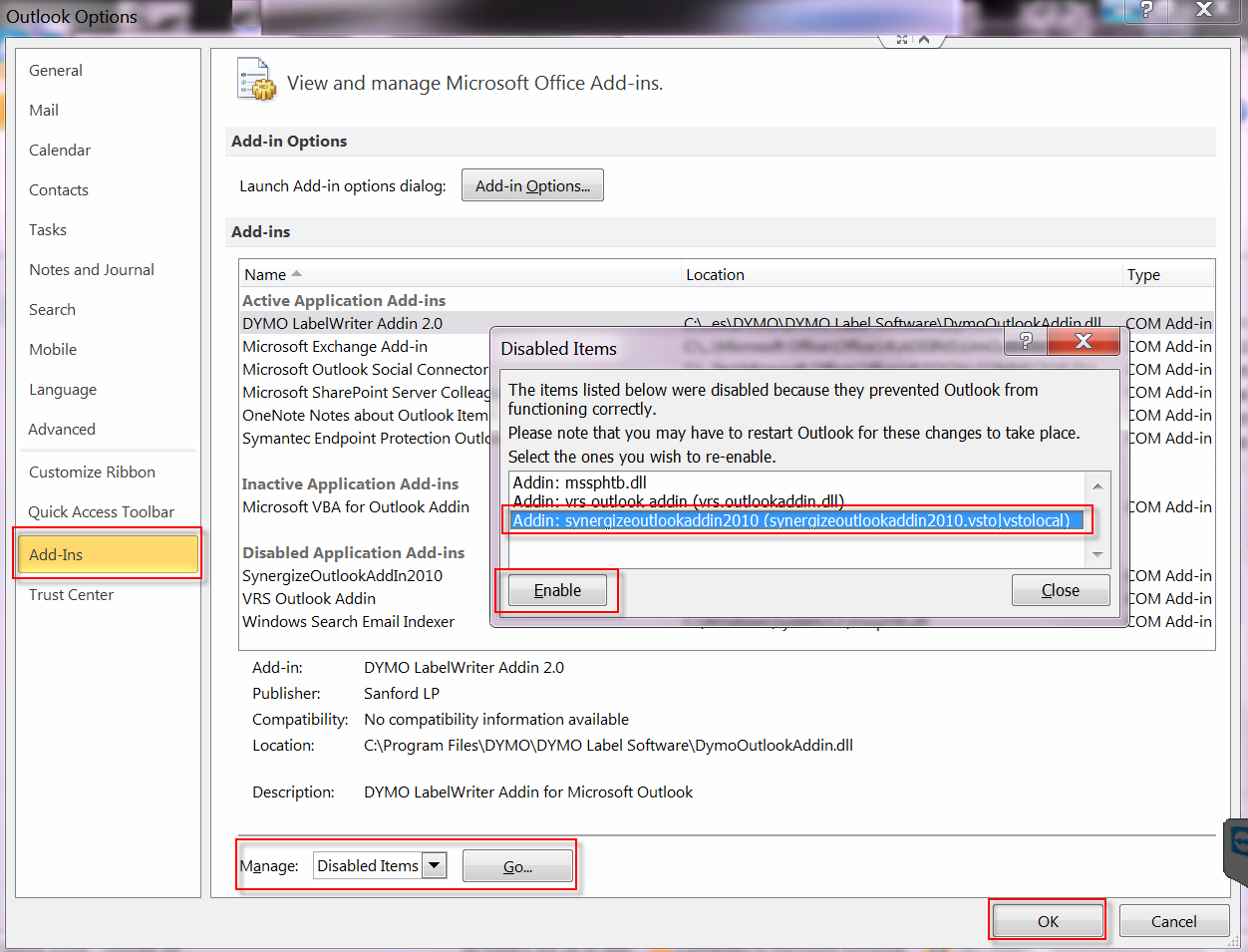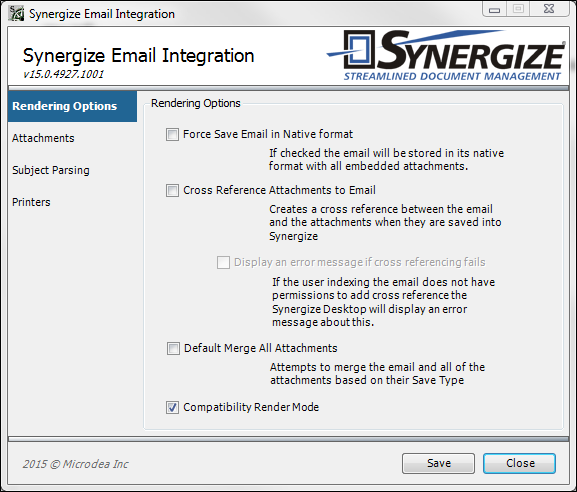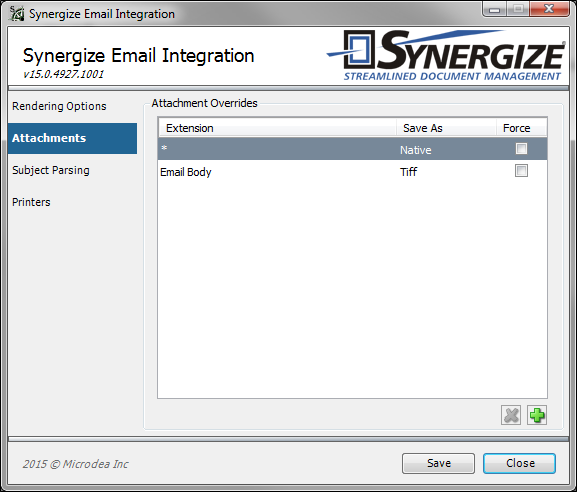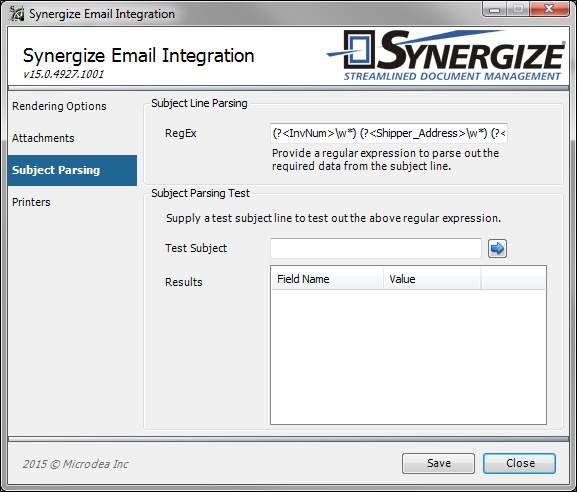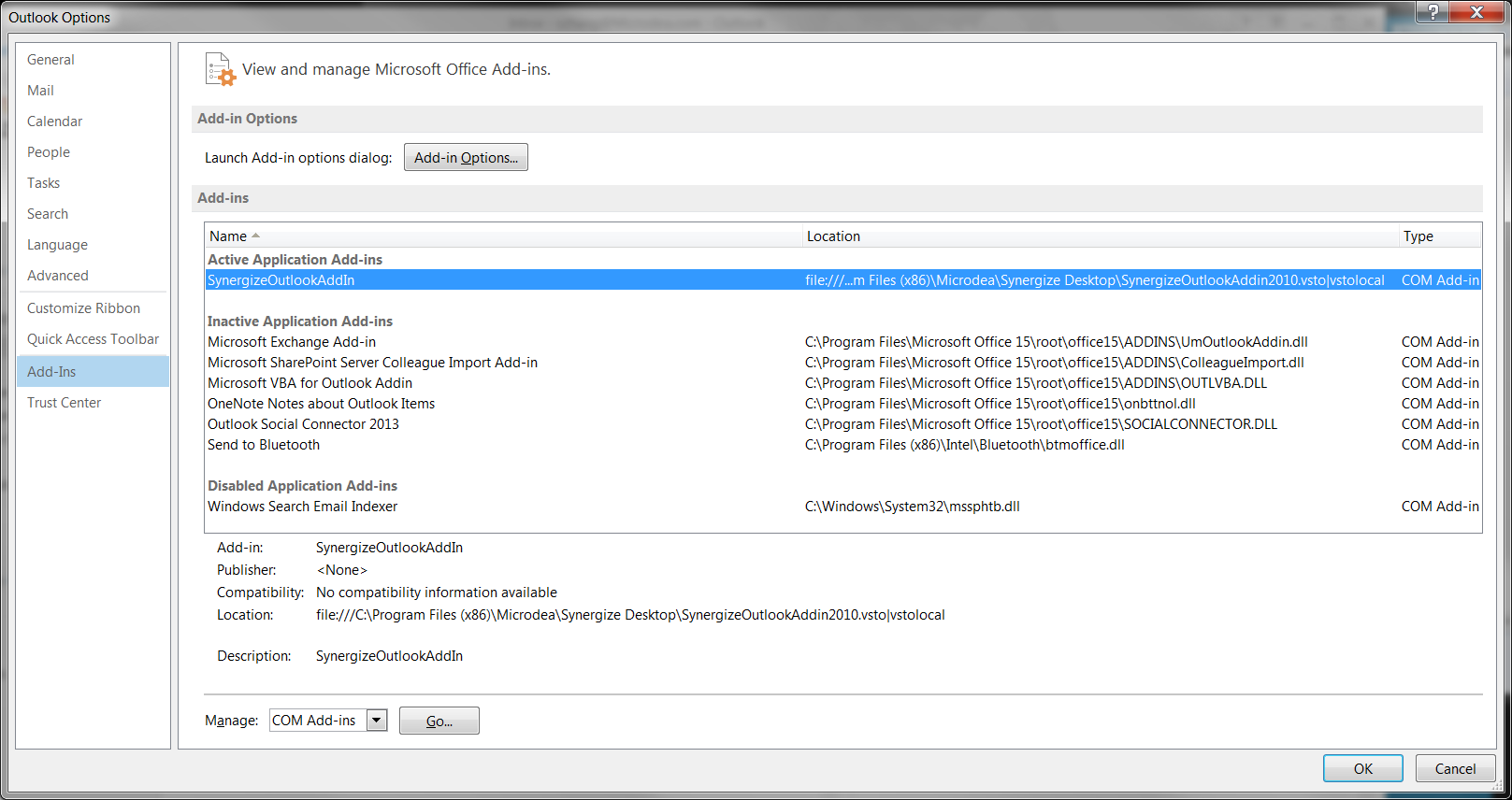Synergize Add-in for Microsoft Office
Synergize Desktop is an add-in application installed on client machines to automate the task of saving documents to Synergize repositories. Add-ins integrate the functionality of supported applications such as Microsoft Office (including Outlook, Word, Excel, and PowerPoint) with Synergize.
Basic Workflow:
-
A specific directory on the local desktop system is monitored.
-
One or more desktop add-ins for a variety of applications on the desktop save files to that directory.
-
A separate desktop process picks the files up from that directory and saves them to the repository.
-
You can apply optional processing steps for the saved documents.
Review the sequence of steps, options, and events below to understand how Synergize Desktop works:
-
A Synergize repository can be located on a local or remote system.
-
In each repository, you can configure specific fields, multiple document types, and other indexing information.
-
Your Synergize Desktop installation is configured to communicate with one Synergize deployment. To change the deployment, use the NetSetDeployment utility.
-
Synergize Desktop monitors a specified directory and activates itself when a new file appears.
-
The Synergize Desktop application presents all the repository information from the configured deployment.
-
When a new file is detected in the monitored directory, Synergize Desktop prompts you for the metadata you want to store with that document.
-
Select the applicable indexing fields and provide values where necessary.
-
-
Synergize Desktop add-in integrations are available for the following supported applications:
-
Microsoft Word
-
Microsoft Excel
-
Microsoft PowerPoint
-
Microsoft Outlook
Outlook integration also allows you to choose how the email document image is saved. For example, you can select one of the following options:
-
raw original (native) file
-
TIFF
-
PDF
-
Example: The Synergize Desktop add-in for Microsoft Outlook features a Save to Synergize button you can use with each e-mail message:

Follow these steps to enable the Synergize add-in for Microsoft Outlook. Instructions vary based on your Microsoft Outlook version.
-
When disabled or not yet configured, users do not see the add-in on the Home ribbon in Outlook.
-
In Outlook, go to Options and click the Add-ins tab. In the Manage field, choose COM Add-ins and the click Go.
-
Select the check box for the SynergizeOutlookAddIn and click OK.
-
Set the Manage field to Disabled Items and click Go. Click Enable for the Synergize add-in.
-
Users can now view the available Synergize options in Outlook.
After your administrator installs the Outlook add-in, launch Outlook. The add-in shows a gear icon that allows you to configure certain settings.

-
Click Settings (gear icon).
-
In the resulting Synergize Email Integration window, set your preferences on each tabbed page.
-
Click Rendering Options and configure the following options:
-
Force Save Email in Native Format: If selected, the current email is not converted but saved as an .EML file. Any attachments are saved with the email message.
-
Cross Reference Attachments to Email: You can leverage the Synergize ability to create links between one document and another (cross references). You can save the email and the attachments separately in the repository and create cross-references.
Display An Error Message, If Cross Referencing Fails: Your username may not have all the authorization it needs. This setting allows your admin to choose whether you're shown an error message about that or not.
-
Default Merge All Attachments: Depending on the format of a file, it can be concatenated with other files and saved as one file with multiple pages. Multiple page output is only possible with TIFF or PDF files.
-
Compatibility Render Mode: There are two separate engines that are used to render images. Each of these has strengths and weaknesses and work differently in different environments. Use this option to get the best quality image from your email attachments.
-
-
Click Attachments and configure optional Attachment Overrides.
-
By default, all attachments to emails are saved in the Synergize repository in their native format.
-
An image of the email body itself is also stored in the TIFF file.
-
You can choose to convert specific files to other formats. For example, you could specify that all TIFF files are stored as PDFs.
-
-
Click Subject Parsingand configure the following options:
-
Subject Line Parsing Regex: A regular expression can be used to pull values from the email subject line and place them into repository fields.
-
Subject Parsing Test: After you have entered a regular expression, you can test it against a real subject line to see if the correct values go into the correct fields. Enter a real subject line, then click the blue right arrow icon to execute the test and see the results.
-
-
Click Printersand configure the available printer settings.
-
Click Save and then click Close.
After upgrading Outlook, the Synergize Desktop Add-in might be missing. If you upgrade Microsoft Outlook on your client PC and later uninstall then reinstall the Synergize Outlook Add-in, the Synergize Desktop Add-in Save to Synergize button and the Settings (gear icon) might no longer appear.
As of November 2024, compatibility between the Synergize plug-in and the latest Outlook release has been verified [169140, 418755]. Assuming that your new version of Outlook is supported by Synergize Desktop, always follow these steps when upgrading Outlook:
-
Uninstall Synergize Desktop.
-
Upgrade Microsoft Outlook.
-
Re-install Synergize Desktop. (See also Install Synergize Desktop in Silent Mode.)
Synergize Desktop is an application installed on client machines to automate the task of saving documents to Synergize repositories. Add-ins integrate the functionality of supported applications such as Microsoft Office (including Outlook, Word, Excel, and PowerPoint) with Synergize.
Introduced in Sep 2017 with the release of Desktop 3.7.11.20, Synergize Desktop offers a separately purchased Synergize Desktop Document Splitting Option that allows you to split scanned TIFF document files into individual document files.
-
After your administrator configures the Synergize Server, you can use Synergize Desktop and this optional extension to split your multi-page TIFF files into individual documents.
-
Generally, you should split a document by main properties first and then change any child table properties you want on the individual documents.
-
The end result is smaller TIFF files, which could still have multiple pages of their own if necessary.
Keyboard Shortcuts for Splitting TIFF Documents
Use the following shortcuts to speed up processing documents through Synergize Desktop:
|
Keyboard Shortcut |
Function |
|---|---|
|
Enter |
Append and go to next page |
|
Enter (after main property update) |
Split |
|
Ctrl+Enter |
Force append (append even with property update) |
|
Ctrl+Shift+Enter |
Force split |
|
Alt+A |
Append all |
|
Alt+S |
Skip |
|
Alt+D |
Delete |
|
Alt+Z |
Delete all |
|
Alt+N |
Next page (in edit/view mode) |
|
Alt+B |
Previous page (in edit/view mode) |
|
Alt+X |
Undo last split |

